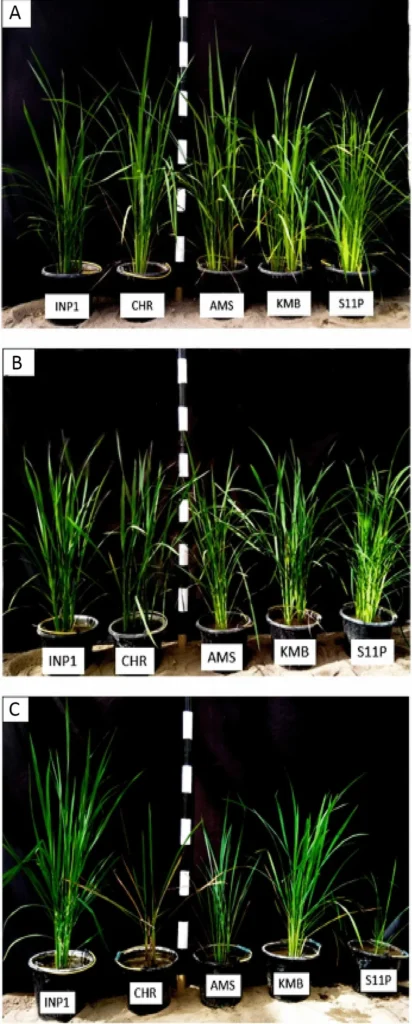In the heart of East Kalimantan, a region known for its vast, untapped agricultural potential, researchers are making strides in unlocking the secrets to cultivating rice on marginal lands. A recent study led by Nurul Aini from the Department of Agroecotechnology at Universitas Mulawarman has shed light on the resilience of local rice cultivars against aluminum stress, a common challenge in acidic soils. The findings, published in ‘Ziraa’ah: Majalah Ilmiah Pertanian’ (translated as ‘Agriculture: Scientific Journal of Agriculture’), could pave the way for more sustainable and productive farming practices in the region.
Aluminum toxicity is a significant barrier to agriculture on acidic soils, which make up a substantial portion of the world’s arable land. These soils, often found in tropical and subtropical regions, can hinder plant growth and reduce crop yields. Aini’s research focused on identifying rice cultivars that can thrive despite high levels of aluminum, offering a promising solution for farmers looking to cultivate these marginal lands.
The study involved 25 rice genotypes, including 23 local cultivars from East Kalimantan and two control varieties known for their tolerance (Mekongga) and sensitivity (IR64) to aluminum stress. The researchers subjected these cultivars to varying concentrations of aluminum (0, 250, and 500 ppm of AlCl3) and assessed their growth parameters, including root and shoot growth, fresh and dry weight, and plant sensitivity index.
The results were compelling. Aluminum stress significantly disrupted the growth of the local rice cultivars, particularly affecting root development. However, two cultivars, Pulut Mayang and Pulut Linjuang, stood out for their consistent tolerance to aluminum stress at both 250 ppm and 500 ppm concentrations. “These cultivars showed remarkable resilience, maintaining their growth even under high aluminum stress,” Aini noted.
Other cultivars, such as Kawit, Bentian, Mayas Putih, and Ketan putih, demonstrated tolerance at the lower aluminum concentration of 250 ppm. In contrast, the sensitive control variety, IR64, showed significant susceptibility to aluminum stress at both concentrations.
The implications of this research are far-reaching. By identifying aluminum-tolerant rice cultivars, farmers in East Kalimantan and similar regions can expand their agricultural activities into previously unproductive lands. This not only enhances food security but also opens up new economic opportunities for local communities.
“The potential for commercial impact is substantial,” Aini explained. “Farmers can now consider cultivating these tolerant varieties on acidic soils, which could lead to increased productivity and economic benefits.”
Moreover, the study highlights the importance of preserving and studying local rice cultivars. These varieties, often overlooked in favor of high-yielding commercial strains, may hold the key to sustainable agriculture in challenging environments.
As the world grapples with the effects of climate change and the need for sustainable agricultural practices, research like Aini’s offers a beacon of hope. By harnessing the natural resilience of local crops, we can unlock the potential of marginal lands and ensure food security for future generations. The findings from this study not only contribute to the scientific community but also provide practical solutions for farmers and policymakers alike.

